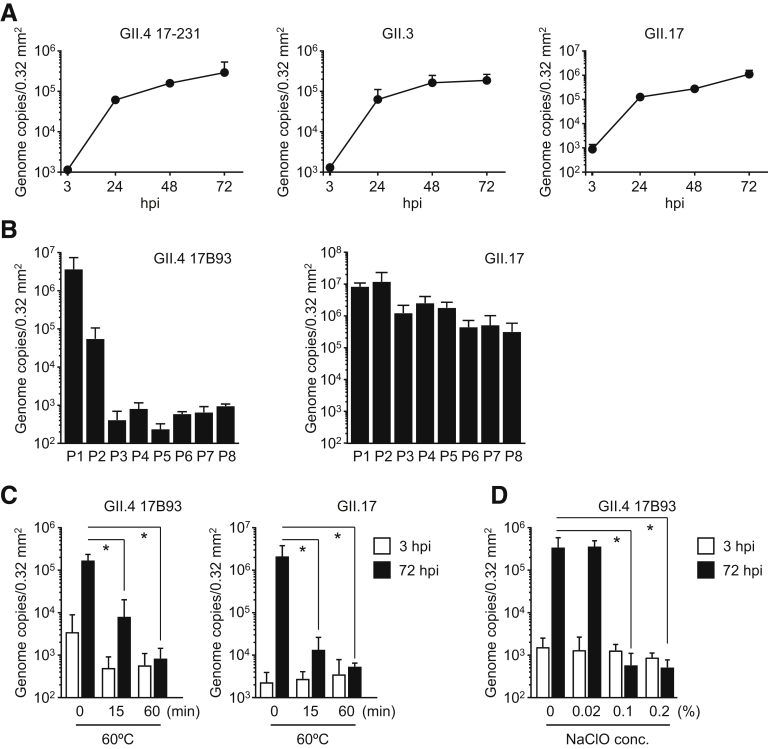Supplementary Figure 2.
Inactivation of HuNoVs by heat and sodium hypochlorite treatment. Monolayered human iPSC–derived IECs were inoculated with (A) 2 × 106 or (B) 3.7 × 107 (GII.4) or 5.8 × 108 (GII.17) genome equivalents of the indicated HuNoV genotypes. Inoculation and sampling were done as described in the Materials and Methods. Viral genome RNA was extracted from each supernatant sampled at (A) the indicated time or (B) 24 to 48 hpi, and then genome equivalents were quantified with reverse transcriptase qPCR. Each value is representative of at least 3 independent experiments and is shown as the mean ± SD from (A) 6 or (B) 3 wells of supernatants of each culture group. (C) GII.4 and GII.17 HuNoVs (2 × 106 genome equivalents) were incubated at 60°C for the indicated times. (D) GII.4 HuNoVs (2 × 107 genome equivalents) were incubated with the indicated concentrations of sodium hypochlorite (NaClO) at room temperature for 30 minutes, and then diluted with base medium to 2 × 106 genome equivalents/100 μL. Monolayered human iPSC–derived IECs were inoculated with each treated HuNoV. Viral genome RNA was extracted from both supernatants, and the genome equivalents were quantified by reverse transcriptase qPCR. Samples at 3 hpi were used as in the references (A, C, and D). Each value is representative of 3 independent experiments and is shown as the mean ± SD from 6 wells of supernatants of each culture group. *P < .05.

